亚硝酸丁酯
一般危化品
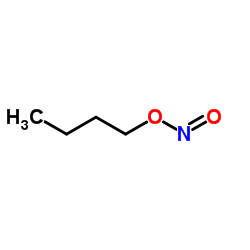
亚硝酸丁酯结构式
|
常用名 | 亚硝酸丁酯 | 英文名 | Butyl nitrite |
|---|---|---|---|---|
| CAS号 | 544-16-1 | 分子量 | 103.120 | |
| 密度 | 1.0±0.1 g/cm3 | 沸点 | 78.8±3.0 °C at 760 mmHg | |
| 分子式 | C4H9NO2 | 熔点 | N/A | |
| MSDS | 中文版 美版 | 闪点 | -13.3±0.0 °C | |
| 符号 |


GHS02, GHS06 |
信号词 | Danger |
亚硝酸丁酯用途【用途一】 用于有机合成。 |
| 中文名 | 亚硝酸丁酯 |
|---|---|
| 英文名 | 1-Butyl nitrite |
| 中文别名 | 亚硝酸正丁酯 | 亚硝酸正丁酯 |
| 英文别名 | 更多 |
| 密度 | 1.0±0.1 g/cm3 |
|---|---|
| 沸点 | 78.8±3.0 °C at 760 mmHg |
| 分子式 | C4H9NO2 |
| 分子量 | 103.120 |
| 闪点 | -13.3±0.0 °C |
| 精确质量 | 103.063332 |
| PSA | 38.66000 |
| LogP | 2.11 |
| 外观性状 | 黄色液体 |
| 蒸汽压 | 101.0±0.1 mmHg at 25°C |
| 折射率 | 1.416 |
| 储存条件 | 储存注意事项储存于阴凉、干燥、通风良好的库房。远离火种、热源。库温不宜超过37℃。保持容器密封。应与还原剂、酸类等分开存放,切忌混储。采用防爆型照明、通风设施。禁止使用易产生火花的机械设备和工具。储区应备有泄漏应急处理设备和合适的收容材料。 |
| 稳定性 | 1.稳定性 稳定 2.禁配物 强氧化剂 3.避免接触的条件 受热 4.聚合危害 不聚合 5.分解产物 氮氧化物 |
| 水溶解性 | SLIGHTLY SOLUBLE |
| 分子结构 | 1、摩尔折射率:26.08 2、摩尔体积(cm3/mol):104.0 3、等张比容(90.2K):245.8 4、表面张力(dyne/cm):31.1 5、极化率(10-24cm3):10.34 |
| 计算化学 | 1.疏水参数计算参考值(XlogP):1.3 2.氢键供体数量:0 3.氢键受体数量:3 4.可旋转化学键数量:3 5.互变异构体数量:无 6.拓扑分子极性表面积38.7 7.重原子数量:7 8.表面电荷:0 9.复杂度:47 10.同位素原子数量:0 11.确定原子立构中心数量:0 12.不确定原子立构中心数量:0 13.确定化学键立构中心数量:0 14.不确定化学键立构中心数量:0 15.共价键单元数量:1 |
| 更多 | 1.性状:无色或浅黄色油状液体,有特殊气味。 2.沸点(℃):78 3.相对密度(水=1):0.88(20℃) 4.相对蒸气密度(空气=1):3.5 5.饱和蒸气压(kPa):101.08(78℃) 6.辛醇/水分配系数:2.35 7.闪点(℃):-13.33 8.溶解性:不溶于水,可混溶于乙醇、乙醚。 |
|
|||||||||||||||||||||||||||||||||||||||||||||||||||||||||||||||||||||||||||||||||||||||||||||||||||||||||||||||||||||||||||||||||||||||||||||||||||||||||||||||||||||||||||||||||||||||||||||||||||||||||||||||||||||||
|
亚硝酸丁酯毒理学数据: 1、急性毒性:成年男人经口:153 mg/kg,血-高铁血红蛋白血症,碳氧; 大鼠经口LD50:83mg/kg,行为-共济失调,刚性(包括僵住),呼吸困难; 大鼠经吸入LC50:420 ppm/4H,行为-改变睡眠时间(包括变化的翻正反射),刺激肺部,胸部或呼吸-紫绀; 小鼠经口LD50:171mg/kg,肝变化,血-高铁血红蛋白血症,碳氧; 小鼠经吸入LC50:567 ppm/1H,机体活动改变(具体分析),肺部、胸部或呼吸-紫绀,肾、输尿管、膀胱-尿量增加; 小鼠经腹腔LD50:158mg/kg,引起肝变化; 2、其他多剂量毒性数据:小鼠经吸入TCLo:300 ppm/7H/60D-I,肺重量变化,脾脏重量变化,生化-酶抑制,诱导或改变血液或组织水平-肝微粒混合氧化酶(脱,羟基等); 3、致突变数据:微生物机体TEST系统突变:细菌-鼠伤寒沙门氏杆菌:1 mg/plate; 在哺乳动物体细胞突变cellsTEST系统:啮齿动物-小鼠淋巴细胞:2820umol/L。 4.急性毒性 LD50:83mg/kg(大鼠经口) LC50:420ppm(大鼠吸入,4h) 亚硝酸丁酯生态学数据: 该物质对环境可能有危害,对水体应给予特别注意。 |
| 符号 |


GHS02, GHS06 |
|---|---|
| 信号词 | Danger |
| 危害声明 | H225-H301 + H331 |
| 警示性声明 | P210-P261-P301 + P310-P311 |
| 个人防护装备 | Eyeshields;Faceshields;full-face respirator (US);Gloves;multi-purpose combination respirator cartridge (US);type ABEK (EN14387) respirator filter |
| 危害码 (欧洲) | F:Flammable;T:Toxic; |
| 风险声明 (欧洲) | R11;R23/25 |
| 安全声明 (欧洲) | S16-S24-S45 |
| 危险品运输编码 | UN 2351 3/PG 2 |
| WGK德国 | 1 |
| RTECS号 | RA0780000 |
| 包装等级 | II |
| 危险类别 | 3.1 |
| 海关编码 | 2920909090 |
|
~77% 
亚硝酸丁酯 544-16-1 |
| 文献:Dubery, Ian A.; Louw, Anna E.; Van Heerden, Fanie R. Phytochemistry, 1999 , vol. 50, # 6 p. 983 - 989 |
|
~% 
亚硝酸丁酯 544-16-1 |
| 文献:Journal of the Chemical Society, Chemical Communications, , # 3 p. 229 - 230 |
|
~% 
亚硝酸丁酯 544-16-1 |
| 文献:Journal of the Chemical Society, Chemical Communications, , # 3 p. 229 - 230 |
|
~% 
亚硝酸丁酯 544-16-1 |
| 文献:Journal of the American Chemical Society, , vol. 79, p. 5832 |
|
~% 
亚硝酸丁酯 544-16-1 |
| 文献:Journal of Organic Chemistry, , vol. 55, # 21 p. 5606 - 5609 |
|
~6% 
亚硝酸丁酯 544-16-1
详细
|
| 文献:Journal of the Chemical Society, Faraday Transactions 1: Physical Chemistry in Condensed Phases, , vol. 80, p. 609 - 616 |
|
~% 
亚硝酸丁酯 544-16-1 |
| 文献:Journal of Physical Chemistry, , vol. 89, # 13 p. 2914 - 2916 |
|
~% 
亚硝酸丁酯 544-16-1 |
| 文献:Helvetica Chimica Acta, , vol. 25, p. 639 |
|
~% 
亚硝酸丁酯 544-16-1 |
| 文献:Justus Liebigs Annalen der Chemie, , vol. 579, p. 193,201 |
| 亚硝酸丁酯上游产品 9 | |
|---|---|
| 亚硝酸丁酯下游产品 9 | |
1.由丁醇与亚硝酸钠反应而得。
2.制法:
于装有搅拌器、温度计、滴液漏斗的反应瓶中,加入95g(1.36mol)亚硝酸钠,380mL水,搅拌溶液冰盐浴冷却至0℃,慢慢滴加预先冷至0℃的由浓硫酸34mL、水25mL、正丁醇(2)92.5g(1.2mol)配成的溶液。滴加速度控制在反应液℃在0℃左右,约1h加完。低温反应1.5h。分出有机层,用含少量的碳酸氢钠的饱和食盐水洗涤,无水硫酸镁干燥,减压蒸馏,收集25~28℃/5.72kPa的馏分,得亚硝酸正丁酯(1)110g,收率85%。
| 海关编码 | 2920909090 |
|---|---|
| 中文概述 | 2920909090 其他无机酸酯(不包括卤化氢的酯)(包括其盐及它们的卤化,磺化,硝化和亚硝化衍生物)。监管条件:无。增值税率:17.0%。退税率:9.0%。最惠国关税:6.5%。普通关税:30.0% |
| 申报要素 | 品名, 成分含量, 用途 |
| Summary | 2920909090 esters of other inorganic acids of non-metals (excluding esters of hydrogen halides) and their salts; their halogenated, sulphonated, nitrated or nitrosated derivatives。Supervision conditions:None。VAT:17.0%。Tax rebate rate:9.0%。MFN tariff:6.5%。General tariff:30.0% |
|
Chemoselective nitration of aromatic sulfonamides with tert-butyl nitrite.
Chem. Commun. (Camb.) 49(5) , 514-6, (2013) A methodology for the efficient conversion of aromatic sulfonamides into their mono-nitro derivatives using tert-butyl nitrite is reported. The reaction exhibits a high degree of chemoselectivity for ... |
|
|
Post-translational modification in the gas phase: mechanism of cysteine S-nitrosylation via ion-molecule reactions.
Rapid Commun. Mass Spectrom. 25(21) , 3216-22, (2011) The gas-phase mechanism of S-nitrosylation of thiols was studied in a quadrupole ion trap mass spectrometer. This was done via ion-molecule reactions of protonated cysteine and many of its derivatives... |
|
|
Acute effects of some volatile nitrites on motor performance and lethality in mice.
Neurobehav. Toxicol. Teratol. 8(2) , 139-42, (1986) Mice were examined for effects on lethality and motor performance on an inverted screen test following inhalation exposure to isoamyl, n-butyl and isobutyl nitrite. All three nitrites produced concent... |
| Butyl ester of nitrous acid |
| Butyl nitrite |
| EINECS 208-862-1 |
| n-BUTYL NITRITE |
| Nitrous acid, n-butyl ester |
| 1-Butyl nitrite |
| Nitrous acid, butyl ester |
| MFCD00002058 |


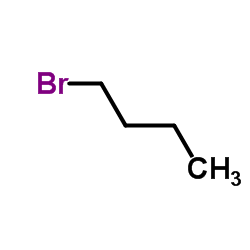









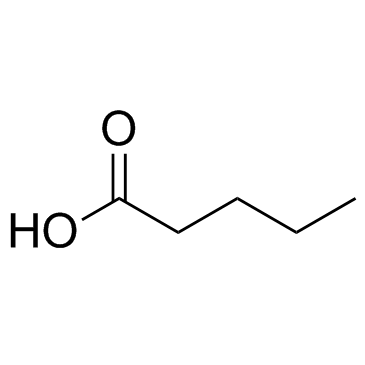

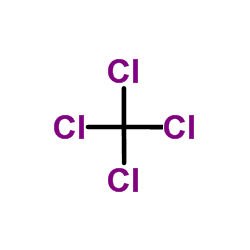

 CAS号107649-71-8
CAS号107649-71-8 CAS号3279-07-0
CAS号3279-07-0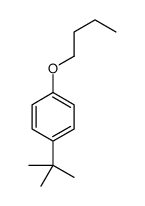 CAS号5891-68-9
CAS号5891-68-9 CAS号3972-56-3
CAS号3972-56-3 CAS号5921-80-2
CAS号5921-80-2 CAS号7775-81-7
CAS号7775-81-7 CAS号542-52-9
CAS号542-52-9 CAS号59-89-2
CAS号59-89-2